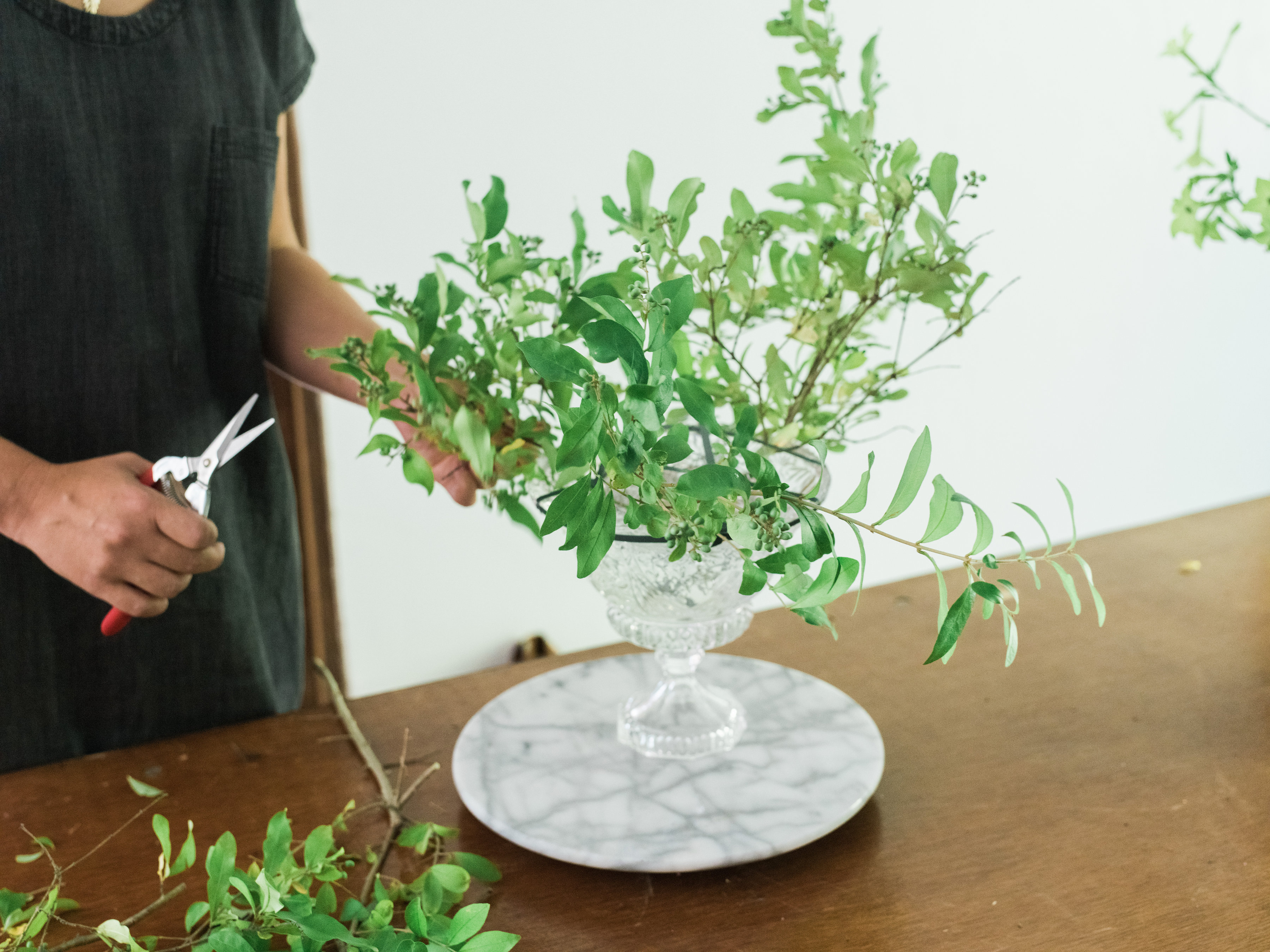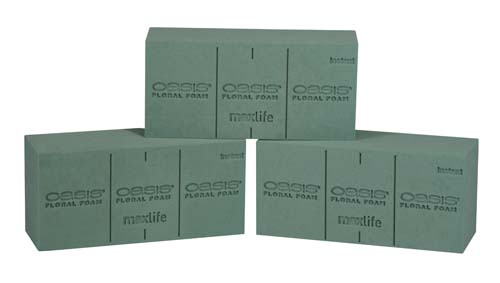I’m often asked what it means to be an eco-friendly florist. To answer the question more specifically, this is the first of a series of posts about how we are an environmentally and socially conscious florist, as well as a lot of my own thoughts about the balance between running a profitable business and being eco-friendly. At Pollen, being an eco-friendly florist means we work to minimize the resources we use while minimizing waste. We also try to be as socially responsible as possible.
Up first, I’d like to share what led me to eliminate floral foam from our studio. Here’s why I gave up floral foam…

A large contributor to waste in the floral design industry is the use of floral foam, sometimes called Oasis (a brand name, like Kleenex). Most florists rely heavily on this product, cutting bricks of the green, spongy foam to fit into containers such as vases, urns, and compotes to provide a foundation to build the arrangement and a water source for the arrangement. The foam is soaked in water before flowers are added to provide a water source for the flowers. Florists insert the foliage and flower stems in the foam to keep the stems in place. This makes both design and transport easier, because the stems stay put.
But what the heck IS floral foam? Great question, and one without an easy-to-find answer. It first was patented in various forms in the 1940s and the 1950s, with the first form of Oasis patent here. Reading the patent applications (and I did!), floral foam was being proposed to replace methods such as using sphagnum moss, cedar, or shredded newspaper as a foundation for flowers. In technical terms, it’s an open cell phenol-formaldehyde foam. Floral foam is essentially plastic. It’s a petroleum-derived product, meaning it comes from a non-renewable resource. And it contains formaldehyde and carbon black.

As a conscious consumer, I try to avoid products that require using hazardous chemicals in their manufacture. But moreover, I don’t want to expose myself or my crew to hazardous materials. While the formaldehyde is present only in small amounts in the final product, the way that floral foam is prepared for use by florists is the concerning part. Typically, florists cut the floral foam to fit the container it will be used in, then secure it with floral tape. Some florists soak the whole bricks, then cut them after soaking. But many florists cut the bricks before soaking, which releases a floral foam dust that is easily inhaled. From years of working in the floral industry, I can tell you that when it is cut while dry, floral designers inhale the floral foam dust. Without getting too graphic, let me just say that the proof is in the Kleenex!
But beyond the chemical composition of floral foam, floral foam is a single-use item, meaning it ends up in the garbage after it’s used just once. I’ve worked at flower shops where we went through cases and cases of floral foam each week. At Pollen, we try to create as little waste as possible, so eliminating floral foam was one of the first steps we took toward reducing the trash we create.
What about recent claims about biodegradable floral foam? Oasis brand is touting a new formula with “Enhanced Biodegradability.” It states that this means that it has been shown “to biodegrade 100 percent within 567 days in biologically active landfill conditions.” The problem is that landfills are not designed to be biologically active. A biologically active landfill would be a stinky, seeping one so landfills are designed to be anaerobic, inactive environments. Landfills are designed to store garbage, not to decompose it. Want to learn more about biodegradable plastics? Further reading here.
So how did we get rid of floral foam in our studio? In the next post, I’ll share how we get around using floral foam, including the alternatives to floral foam that we use in the studio. Future posts in this series, being kicked off on Earth Day, will cover our other environmentally and socially conscious efforts.
Dear Pollen, T
hank you for your article on the effect of Floral Foam on our environment. I would greatly appreciate your permission to use information in this article for the Pacific Region publication. The region is part of the National Garden Clubs.
Thank you for your assistance,
Hi Mary Lou,
I realize I’m quite late with this reply, but yes, please do share! It’ll be great to get the word out!
Thanks!
Lynn